Question of the Week – Number 1: February 28, 2019
“Why is my redtip photinia thinning out and apparently dying?”
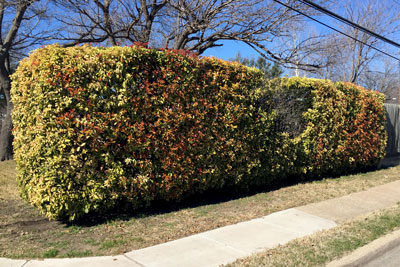
Hedge of redtip photinia is dying progressively. Soon it will all be gone.
This is Entomosporium fungal leaf spot, and we’ve talked about it here a time or two before. Unfortunately, it has rendered this tall screening shrub almost useless in American gardens from the West Coast all across the South and up the East Coast as well.
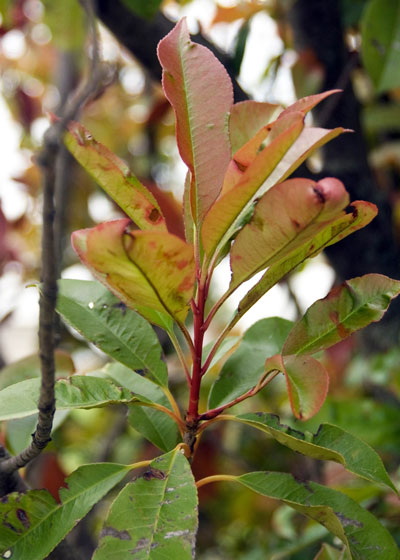
This branch tells it all. Fungal leaf spot Entomosporium has come into this plant’s life, and it will soon kill it.
It starts with harmless looking maroon freckles sprinkled across the leaves. For a year or more it seems as if all will be fine. But then the leaves start to lose their green color, eventually turning white and finally dying entirely.
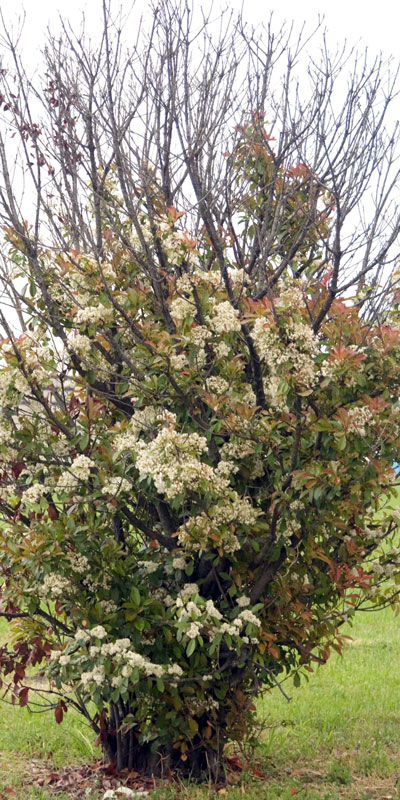
This redtip is in the process of dying. You can see how much has been lost already. Less than one year after I took this photo, the rest of the shrub had been killed and removed.
A year or two later there are bare branches sprinkled throughout the plant, and finally the entire shrub dies. Other plants just a few feet away may stay unaffected for a year or two, but eventually they, too, will succumb.
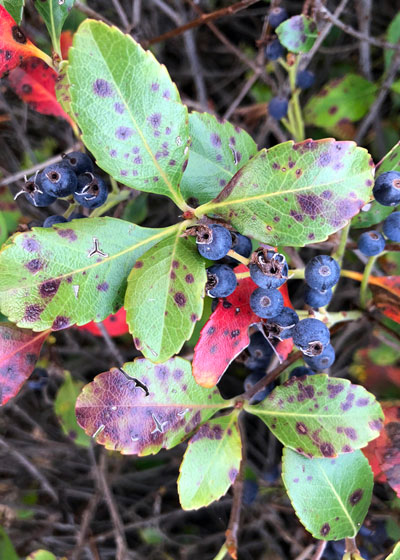
Now Indian hawthorns are dying from Entomosporium fungal leaf spot as well. It’s time to move on from redtips and hawthorns to other shrubs in our gardens.
And now, to make matters worse, the same thing is happening to Indian hawthorns. The two plants are closely related. It’s gotten so bad that I can’t recommend either for any landscaping uses at all.
The worst part of it all is that there is no preventive treatment, nor is there any cure for plants that have already shown symptoms. It’s a downhill slide to oblivion.
The best replacements? For large, screening shrubs to replace the redtip photinias, I suggest either Nellie R. Stevens hollies (to 10-15 ft. tall) or Willowleaf hollies (to 10-12 ft. tall).
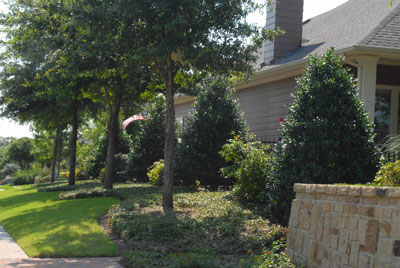
Nellie R. Stevens holly
To replace Indian hawthorns, Carissa hollies are almost an exact match, both in size and growth form. Their only difference is that they do not bloom.
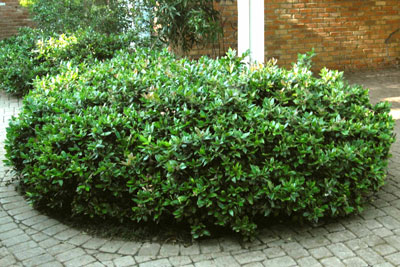
Carissa holly
